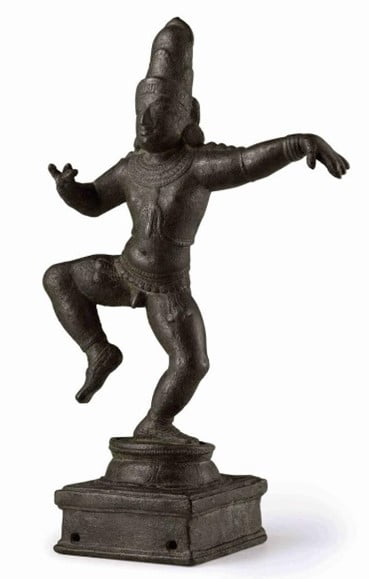History and Art and Culture
In News: The Idol Wing-CID has traced two Chola-era bronze idols that were stolen about 50 years ago from the Vishwanatha Swamy Temple at Alathur in Tiruvarur district and smuggled to the United States.
About:
- Three antique metal idols — Vishnu, Sridevi and Bhudevi belonging to the Vishwanatha Swamy Temple — had been burgled.
- The Idol Wing traced the idols of Yoganarasimha and Ganesha, Somaskandar idol and the Dancing Sambandar idol.


Indian Bronze Sculptures:
- The process of making alloy of metals by mixing copper, zinc and tin is called bronze.
- The ‘Dancing Girl’ from Mohenjodaro is the earliest bronze sculpture datable to 2500 BCE.
- At Daimabad (Maharashtra) datable to 1500 BCE, bronze ‘Chariot’ has been discovered.
- They are cast through cire-perdu or ‘lost-wax’ process.
- First a wax model of the image is made by hand of pure beeswax
- It is then pressed through a pichki or pharni — which squeezes the wax into noodle-like shape.
- These wax wires are then wound around to the shape of the entire image. The image is now covered with a thick coating of paste, made of equal parts of clay, sand and cow-dung.
- Into an opening on one side, a clay pot is fixed. In this molten metal is poured.
- While the molten metal is poured in the clay pot, the clay-plastered model is exposed to firing. As the wax inside melts, the metal flows down the channel and takes on the shape of the wax image.
- The image is later chiselled with files to smoothen it and give it a finish.
- Sometimes an alloy of five metals — gold, silver, copper, brass and lead — is used to cast bronze images.
Source: The Hindu














